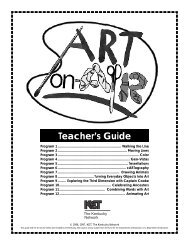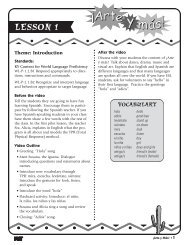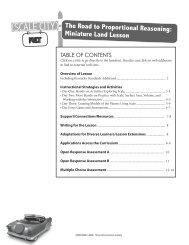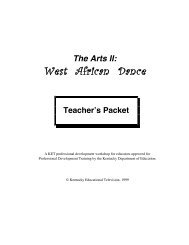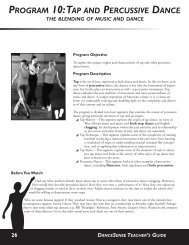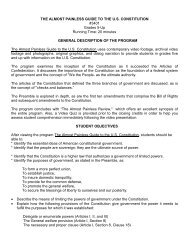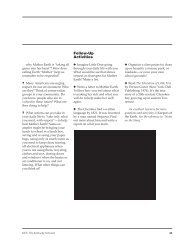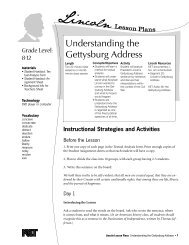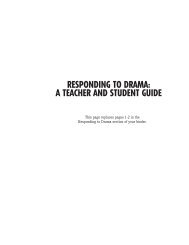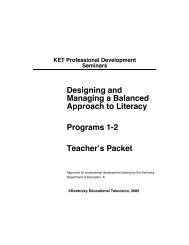7369 old music 2402 - KET
7369 old music 2402 - KET
7369 old music 2402 - KET
You also want an ePaper? Increase the reach of your titles
YUMPU automatically turns print PDFs into web optimized ePapers that Google loves.
Program 3<br />
John<br />
McCutcheon<br />
Instruments:<br />
hammer dulcimer, banjo<br />
The Hours After<br />
I learned to play the hammer dulcimer by ear, transferring <strong>music</strong> from fiddles<br />
and harps. After playing a few years on my own, I began to meet <strong>old</strong>er <strong>music</strong>ians<br />
who had grown up with the instrument and who were generous and enthusiastic<br />
teachers. This is an original composition employing both the loud and quiet tones<br />
of the dulcimer as well as the newly invented damper system that Sam Rizzetta<br />
built for my instrument.<br />
The Rainstorm<br />
This is an easy exercise in polyrhythms (“many rhythms”). By making many<br />
different sounds with our hands, we can discover that pitch and rhythm are parts<br />
of all sounds, not just the sounds made by more familiar <strong>music</strong>al instruments.<br />
Another way to demonstrate this idea is to have different groups of people say<br />
different words at the same time (for example: “watermelon,” “dill pickles,” and “Oh,<br />
no, you don’t!”), paying attention to the natural accents on the different words and<br />
the rise and fall of the voices. It also shows the importance of following the lead of<br />
a <strong>music</strong>al director and of paying attention to the sound of the whole “orchestra.”<br />
No More Pie<br />
(Traditional; new words and variations by John McCutcheon)<br />
This is an example of body and vocal coordination as well as listening/imitating<br />
skills. Vocal inflections, speech melody, rhythmic variations, and word play prove<br />
that complex rhythms are not as hard as they seem and that working collectively<br />
can be fun. Variants of this call-and-response song can include children<br />
contributing their own favorite “pies,” fitting into the rhythmic structure established<br />
and/or taking the lead in creating variations that everyone else must imitate. Group<br />
and individual skills, including leadership, are a focus.<br />
Oh my, no more pie.<br />
Pie’s too sweet, I want a piece of meat.<br />
Meat’s too red, I want a piece of bread.<br />
The bread’s too brown, so I gotta go to town.<br />
The town’s too far, and I don’t drive a car.<br />
But I won’t make a fuss, I’ll just hop on the bus.<br />
I finally got to town, where I met baker Brown.<br />
He said, “Oh my, there’s no more pie.<br />
“No chocolate pie,<br />
“No strawberry pie,<br />
“No banana creme pie,<br />
“No mincemeat pie,<br />
“No apple pie,<br />
“No pecan pie,<br />
“No butterscotch pie,<br />
“No kitty litter pie!”<br />
Oh my, no more pie.<br />
<strong>KET</strong>, The Kentucky Network 17



